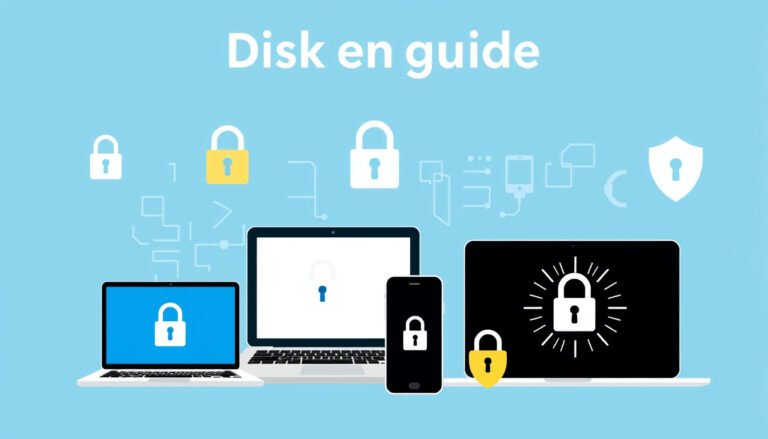
Losing important data—whether due to accidental deletion, formatting, system crashes, or corrupted drives—can be frustrating and, at times, devastating. Fortunately, data recovery software has evolved to become powerful, user-friendly tools that can help you retrieve lost files from various storage devices with impressive success rates. This guide will walk you through the essential aspects of using data recovery software effectively and safely, plus highlight some of the best options available in 2025. —
Understanding Data Recovery Software
Data recovery software is designed to scan storage media to locate and restore files that have been deleted, lost, or rendered inaccessible. These tools work by scanning file systems or performing deep scans based on file signatures to recover data that hasn’t been overwritten.
Common Data Loss Scenarios
- Accidental deletion (including Shift+Delete bypassing Recycle Bin)
- Formatting of disks or partitions
- System crashes or OS failure
- Virus or malware infection
- Corrupted or inaccessible storage devices
- Loss caused by partition damage or deletion
How Data Recovery Software Works
When files are deleted, they are usually not erased immediately; instead, the system marks the space as free for new data. Recovery software identifies these "deleted" files by scanning the file system structure or searching for file signatures in unallocated space.

Most software offers two scanning modes:
- Quick Scan: Searches file system records for recently deleted files; faster but may miss files after formatting.
- Deep Scan (or Full Scan): Scans sector-by-sector, looking for file signatures to recover data even when file system info is lost.
Key Features to Look for in Data Recovery Software
Choosing reliable and efficient data recovery software hinges on several factors:
1. Performance & Versatility
- Support for a wide variety of file types: documents, photos, videos, emails, archives, and more.
- Compatibility with different storage media: HDDs, SSDs, USB drives, SD cards, NAS, virtual disks.
- Support for major operating systems and file systems (NTFS, FAT32, exFAT, APFS, HFS+, Ext4, etc.).
2. Scan Speed and Efficiency
- Ability to scan targeted partitions or folders instead of the entire drive
- Preview files during scanning to select what you want to recover immediately
- Fast scan times without sacrificing thoroughness
3. Preview & Recovery Chances
- Preview files before recovery to verify content
- Indicators of file health or likelihood of successful recovery help you avoid corrupt or unusable files
4. User-Friendly Interface
- Simple, intuitive UI suitable for beginners
- Step-by-step guides or wizards that simplify the recovery process
- Clear file filtering and sorting options to quickly locate lost files
5. Additional Tools
- Repair corrupted photos, videos, and documents
- Secure deletion options when you want permanent erasure
- Bootable media for recovering data from crashed or unbootable systems
Step-by-Step Guide: How to Use Data Recovery Software
While interfaces vary slightly between software, the recovery process generally follows these steps:
Step 1: Stop Using the Affected Device
To maximize recovery chances, immediately stop writing new data to the storage device you want to recover files from. New data may overwrite deleted files.
Step 2: Choose and Download Data Recovery Software
Pick a trusted tool compatible with your OS and device. Many programs offer free versions with recovery limits or trial modes.
Step 3: Install the Software on a Different Drive
Install recovery software on a separate disk or partition to avoid overwriting lost data.
Step 4: Launch the Program and Select the Drive or Partition
Specify the storage media where files were lost. Choose the appropriate scanning mode (quick or deep scan).
Step 5: Scan and Preview Files
Wait for the scan to complete or preview files during scanning. Use filters to narrow down file type and date ranges.
Step 6: Select and Recover Files
Choose files you want to restore and save them to a different storage device to prevent overwriting.
Step 7: Backup Retrieved Files & Verify Integrity
Back up recovered data immediately and check file integrity.
Top Data Recovery Software in 2025
1. Disk Drill (Windows, macOS)
A versatile freemium tool praised for its ease of use, quick scanning with live preview, and broad file system support. Ideal for both beginners and professionals.
2. EaseUS Data Recovery Wizard (Windows, Mac)
Known for a 99.7% success rate and comprehensive recovery scenarios including formatted drives and lost partitions. Its free version recovers up to 2GB, helpful for smaller jobs.
3. Recuva (Windows)
A reliable free tool with a simple interface perfect for quick recovery of deleted files and support for damaged or formatted disks. Also offers a Pro version with extra features.
4. R-Studio (Windows, Mac, Linux)
Powerful and geared toward professionals needing advanced recovery options, supporting network recovery and various file systems.
5. PhotoRec (Windows, Mac, Linux)
Open-source software that excels at deep scanning many file formats, especially photos, even when the file system is severely damaged.
Tips for Successful Data Recovery
- Act Quickly: The sooner you attempt recovery, the better the chances.
- Avoid Using the Affected Device: Minimize new writes to avoid overwriting lost files.
- Use Preview Features: Confirm files before recovery to avoid wasting time.
- Back Up Regularly: Prevention is the best cure—maintain multiple backups.
- Stay Within Software Limits: Free versions have recovery limits—consider upgrading for large-scale recovery.
Is Data Recovery Software Safe?
Yes, reputable data recovery software is generally safe to use and does not modify your existing files during scanning. Always download software from official sources to avoid malware risks.
Conclusion
Losing valuable files isn’t the end of the world anymore. With advancements in data recovery software, even non-experts can conveniently retrieve lost data across a variety of devices and formats. By selecting the right tool, following best practices, and acting promptly, you can unlock your lost files quickly and securely. Remember, the key to successful recovery is minimizing data overwrite, choosing software that fits your needs, and following a systematic approach.
Unlock your lost files today—equip yourself with the right knowledge and a reliable data recovery solution to restore your digital memories and essential work with confidence!









